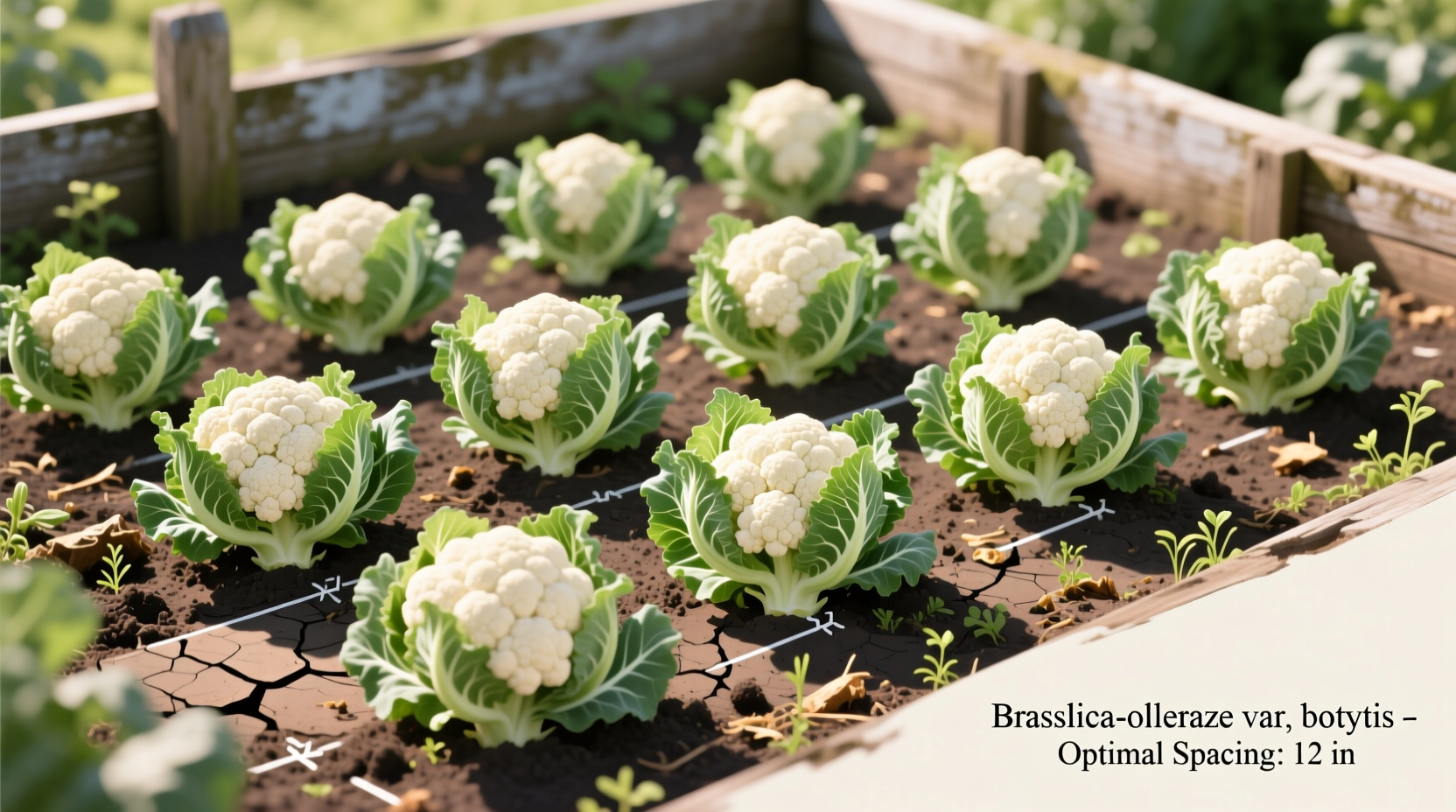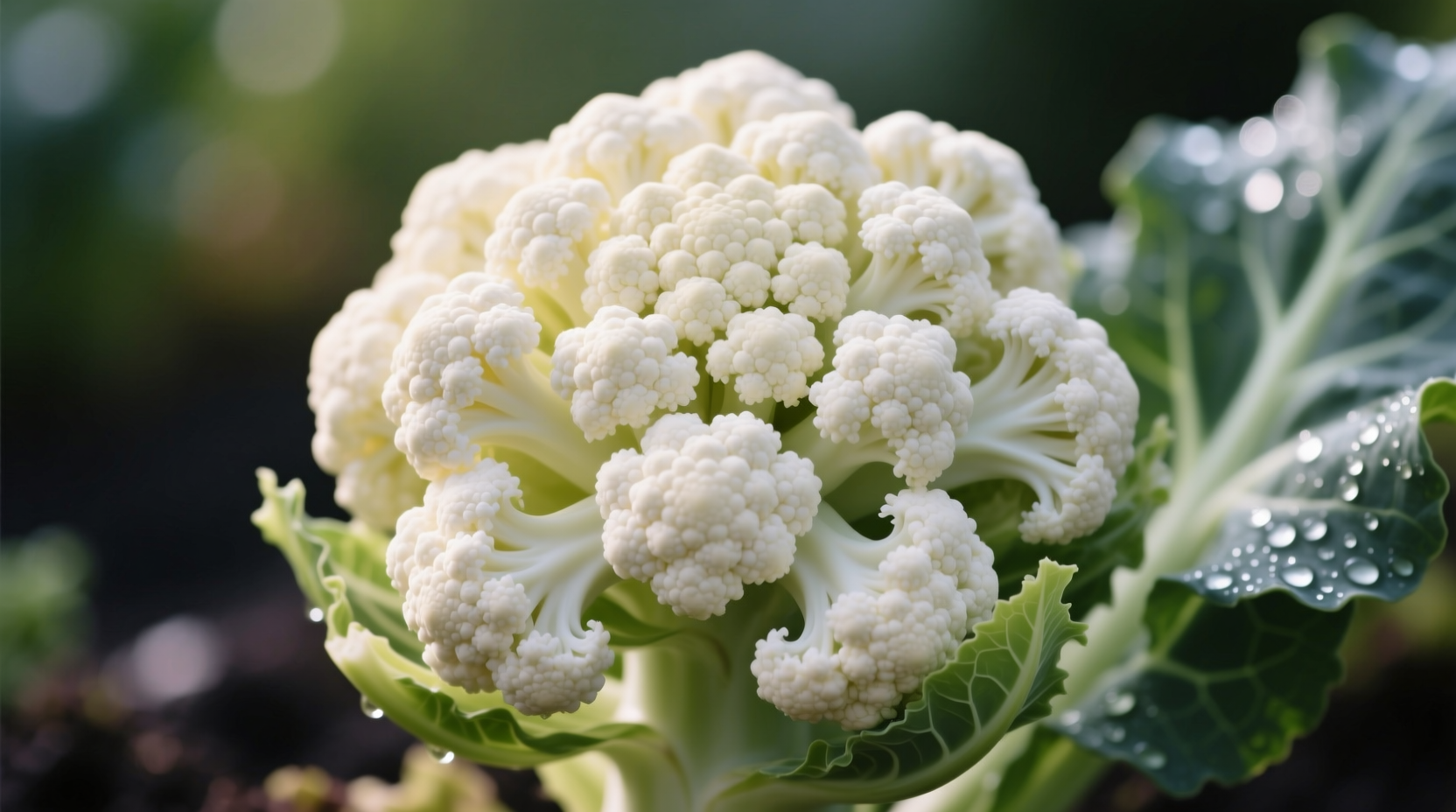Getting cauliflower spacing right separates successful harvests from disappointing results. Whether you're a beginner gardener or refining your technique, understanding the precise distance requirements makes all the difference in your crop's health and productivity.
Why Cauliflower Spacing Matters More Than You Think
Cauliflower's large leaf structure and dense head development demand careful spatial planning. When plants crowd each other:
- Reduced air circulation increases fungal disease risk by up to 40% (Cornell University Extension)
- Competition for nutrients produces smaller, buttoning heads
- Insufficient light penetration creates uneven curd development
- Pest infestations spread more rapidly between touching leaves
Proper spacing directly impacts your harvest quality and quantity. Gardeners who follow recommended spacing guidelines typically achieve 25-30% larger heads with significantly fewer disease issues.

Step-by-Step Spacing Guide for Perfect Cauliflower
Follow these precise measurements for optimal results regardless of your growing method:
| Growing Method | Plant Spacing | Row Spacing | Special Considerations |
|---|---|---|---|
| Traditional Garden Beds | 18-24 inches | 24-36 inches | Space wider in heavy soils with poor drainage |
| Raised Beds | 15-18 inches | Not applicable | Use triangular spacing pattern for maximum yield |
| Container Gardening | One plant per 5-gallon container | N/A | Minimum 12-inch diameter container required |
Planting Process Made Simple
- Prepare soil with 3-4 inches of compost worked into the top 8-12 inches
- Mark planting spots using the spacing guidelines above
- Dig holes slightly deeper than the root ball
- Place transplants at same soil level as nursery pot
- Water thoroughly after planting
- Apply 2-3 inches of organic mulch to conserve moisture
Common Spacing Mistakes and How to Avoid Them
Even experienced gardeners make these spacing errors that compromise their cauliflower harvest:
Overcrowding for Higher Yield
Many gardeners mistakenly plant too close together hoping for more heads. This actually reduces total yield as plants compete for resources. The University of California Cooperative Extension found that overcrowded cauliflower produced 37% fewer marketable heads despite having more plants per square foot.
Ignoring Vertical Growth Patterns
Cauliflower's outward-growing leaves require more space than their initial seedling size suggests. Plants need room to develop their full leaf canopy, which typically reaches 24-30 inches in diameter at maturity.
Not Adjusting for Climate Conditions
Spacing requirements change based on your growing environment:
- Hot climates: Space slightly wider (24 inches) to improve air circulation and reduce heat stress
- Cool climates: Can space slightly closer (18 inches) as plants grow more compactly
- High humidity areas: Increase spacing to minimum 24 inches to prevent fungal diseases
Troubleshooting Spacing Problems
If you've already planted and notice spacing issues, these solutions can help salvage your crop:
Overcrowded Plants
When plants are too close together:
- Thin immediately by removing weaker plants at soil level
- Apply liquid seaweed fertilizer to reduce transplant shock
- Water deeply but less frequently to encourage deeper root growth
Underutilized Space
If you've spaced too widely and have empty garden space:
- Plant quick-growing companion crops like radishes or lettuce between cauliflower plants
- Apply additional compost to maintain soil fertility
- Avoid nitrogen-heavy fertilizers that could promote excessive leaf growth
Advanced Spacing Techniques for Maximum Yield
Experienced gardeners use these professional spacing strategies to optimize their cauliflower harvest:
Triangular Spacing Pattern
Instead of traditional square grid spacing, arrange plants in equilateral triangles. This allows 15% more plants per bed while maintaining adequate spacing. Position each plant at the corners of imaginary 18-24 inch triangles.
Succession Planting Schedule
Maximize your garden space throughout the season:
- Plant early varieties with 18-inch spacing
- Harvest these by mid-season
- Replace with late-season varieties needing 24-inch spacing
- Fill gaps with fast-growing greens between main crops
When Standard Spacing Guidelines Don't Apply
While the 18-24 inch spacing works for most situations, these special circumstances require adjustments:
- Dwarf varieties: Some compact cultivars like 'Snow Crown' can be spaced as close as 15 inches apart
- Container limitations: In containers, prioritize root space over traditional spacing - minimum 5 gallons per plant
- Vertical gardening: When growing up trellises, space plants 12 inches apart with strong support structures
- Extreme climates: In very hot regions, increase spacing to 30 inches to reduce heat stress











 浙公网安备
33010002000092号
浙公网安备
33010002000092号 浙B2-20120091-4
浙B2-20120091-4